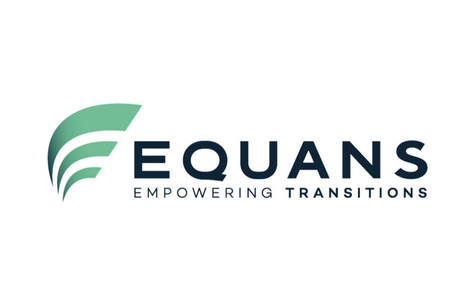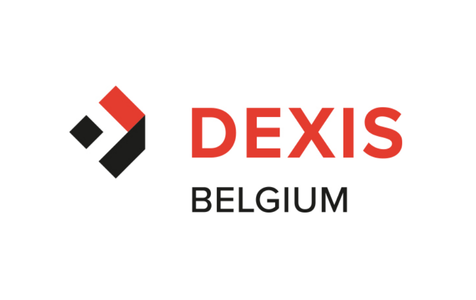Positioning Maintenance at the heart of energy efficiency, for better operational control
Integrating energy into a global operational control strategy implies first and foremost answering the following three questions:
- How to measure the energy performance of your company, its utilities and processes, in order to be able to monitor its improvement and drift over time?
- How to list and implement the areas of work that present the best opportunities?
- Who should be responsible for implementing this action plan and what priorities should be set?
Measuring energy performance
What are the energy performance indicators that can characterise your company? How can you monitor these indicators in a simple and reliable way?
Monitoring energy consumption is only part of the picture of a company's energy efficiency. It is the link between energy consumption and the level of activity that gives a complete picture of the company's energy performance. Knowing your energy efficiency means defining and measuring the following elements
- The most representative activity indicators of the company (To of steel, m³ of water, m² of panel, Degree days,...)
- The energy consumption associated with these same activity indicators.
Once these premises have been defined, the following two questions arise:
- How can all of this production and consumption data be included in a single energy information system in order to establish an energy performance calculation routine?
- The market offers multiple "energy metering" solutions, which ones would be the most suitable for your activity?
Setting up means of measuring and verifying the company's energy performance is an essential and priority basis for implementing an operational control strategy.
"Measuring is knowing"
Drawing up an action plan
Let us first try to redefine what characterises an energy performance opportunity:
- CAPEX - what is the initial investment needed to implement the improvement? What are the financing options for my action plan?
- OPEX - what are the operational gains/costs generated over the lifetime of the energy optimisation?
- ROI (Return on Investment) - what are the returns on investment of my action plan, and what are the long-term financial projections (net present value, internal rate of return)?
- Impact on our energy dependency - to what extent will this change reduce (or increase) our exposure to volatile energy prices?
- The environmental impact - what are the CO2 savings generated by this optimisation?
- The impact on corporate communication - what business opportunities can be derived from my approach and what image can this policy send to our customers?
- The impact on human resources: What are the most appropriate internal and external resources to implement our action plan?
- The answers to these questions will allow us to define priorities, with the aim of quickly implementing low-cost, low-ROI improvements, and then implementing other energy-saving projects.
To find out the main trends in these priorities and to visualise more precisely the involvement of maintenance in this action plan, I carried out a study based on the results of 35 industrial energy audits.
The sectors concerned are varied:
- Food industry
- Chemicals
- Rock processing (quarries)
- Technology industry (electronics, precision mechanics, packaging)
- Waste processing
- Wood industry
- Textiles
- Plastic, metal and cardboard packaging
- Water treatment and distribution
The areas for improvement studied concern all energy uses, both at the level of utilities, processes and buildings. They can be categorised as follows:
- Regulation
- Driving force
- Heat recovery
- Energy management
- Relighting
- Steam-hot water
- Industrial cooling
- Compressed air
- Renewable energy (RES)
- Process
First of all, let us clarify the following points:
- Regulation includes all actions linked to the modification of setpoints and the installation of sensor-regulator-variators aimed at generating energy savings, for all uses combined
- The driving force item only concerns the replacement of old technology motors by new technology motors
- Energy management concerns all the actions arising from the following areas
- Implementation of energy information systems (sensors, reporting and energy analysis, etc.)
- Managing equipment in a responsible manner
- The implementation of energy management systems, such as ISO50001 or branch agreements
- The process actions concern all energy improvements induced by the replacement of industrial equipment. The ROI is calculated on the basis of an investment considering only the extra cost compared to a reference technology. It should be noted that these improvements are not initially made for energy savings purposes, but for productivity, product mix or quality
- The "heat recovery" field includes natural gas cogeneration and heat transfer fluid pipe insulation
- The "compressed air, industrial cooling, hot water/steam" fields do not include improvements related to the modification of control settings, which have been integrated into the "regulation" field
Below is the classification by ROI of all technically feasible energy improvement categories.

Based on these results, the following can be observed:
- The majority of control and energy management projects are profitable in less than 2 years
- The regulation of the installations is an important part of the energy efficiency of the company. The company must identify the regulation defects as a priority, in particular thanks to a consumption measurement system, in order to correct the drifts and defects. CAPEX and ROI are low
- The implementation of an energy information system to measure the evolution and identify unnecessary energy consumption in order to manage it (energy management) is essential
- The implementation of a systematic and recurrent energy management system, such as ISO, enables energy savings to be made at low CAPEX, by reducing the risk of "wastage".
- Renewable energy production projects are not profitable in less than 5 years, except in special cases. It should be noted that there are, however, financing formulas such as third party investors or financial renting which can modify (or improve) the perception of the economic interest of the project
- Heat recovery in industry is a post allowing considerable energy savings to be made
- The modernisation of process installations can catalyse significant energy gains, thanks to the integration of energy efficiency from the design of equipment/installations -> it is necessary to design with energy
- Industrial refrigeration is a particularly important area for energy optimisation in the food industry
- Compressed air is rarely a major use in industry, unlike steam. However, there are important areas for improvement in compressed air based on simple and low-cost levers (network leaks, plant control, etc.)
Define the resources to be mobilised to implement the action plan, and set priorities
The technical nature and the importance of installation adjustments in energy improvements give maintenance a privileged position to implement an energy action plan. An appropriate energy information system will enable the technical department to obtain better transparency on these consumptions, which is an essential prerequisite in the process.
However, it is not easy to mobilise maintenance staff for energy saving purposes, as priorities are often given to the availability of installations and the improvement of production resources. And companies are not (yet) obliged to invest in energy efficiency! Feedback from experience allows us to identify the following obstacles:
- The company's own funds are used primarily for production equipment. However, some companies have specialised in financing energy efficiency and are actively looking for projects.
- The internal technical resources of companies are generally already fully mobilised, and the use of an external company is not a reflex. In order to change this mentality, a question needs to be asked: what is the loss of profit generated by inaction? It is urgent to save energy and the use of external support is a solution to quickly and efficiently catalyse these energy saving opportunities, allowing to import expertise, availability and flexibility, think about it!
Auteur : Hervé DELPORTE Directeur et fondateur de Delpower






